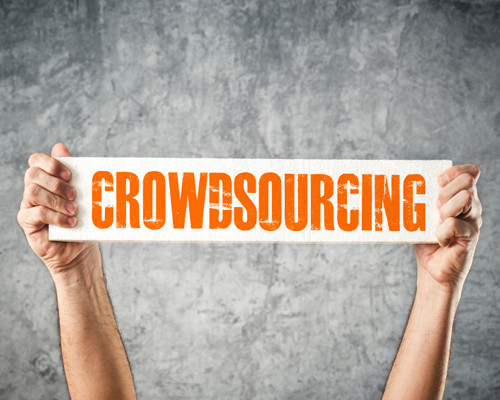I’d be stating the obvious to tell you that the internet has changed human interaction by connecting one person in the world to another, thousands of miles away in a matter of seconds. This modern way of human interaction has had a most dramatic effect on professionals in the marketing industry as it has inverted the balance of power between brands and consumers.
Consumers now have a voice and they use it to complain about poor service or products, recommend the brands they like and suggest new product or service ideas.
Traditionally, for marketers wanting to gain insight or ideas into a new product or campaign they were developing, they would turn to experts and focus groups, engaging specialist firms to carry out lengthy and expensive research programmes designed to collate ideas and inform strategy.
But these are old world tactics that don’t necessarily fit with the digital age. Crowdsourcing platforms provide marketers with a more effective alternative for idea generation and content creation, with the ability to interact with consumers and creative professionals alike from all walks of life. And this is on a level and at a speed never even thinkable before the invention of the internet.
But even though the term crowdsourcing has only started to appear in the media in recent years, the idea that the crowd can provide valuable input is not necessarily that new. For example, the Oxford English Dictionary started out as an open appeal to collate words and phrases from across the English-speaking world. But it is online that the process has been perfected and the results that can be achieved by many are empowering the few.
There are a number of key ways in which I believe crowdsourcing has changed the marketing landscape, such as the speed, efficiency, innovation and relevancy it provides compared to traditional marketing methods.
With focus groups or experts, marketers are restricted to a target audience from a single country, culture or skillset. Repeating the process in multiple locations becomes expensive and time consuming, and ultimately you have to choose between creativity – usually sourced from experts – and insights – traditionally rooted in focus groups against a representative target audience.
By collaborating with diverse creative thinkers, ideas come into fruition much quicker than they traditionally would.
By connecting with creative minds across the globe, crowdsourcing provides access to a more culturally and socially diverse set of humans, with equally diverse, creative ideas. It enables motivated and self-selected individuals to look at issues from a fresh perspective and to come up with new solutions. And they enjoy doing it as it enables them to unleash their creativity.
What is important with these ideas is the relevancy and freshness they provide. Many of the people who get involved in such initiatives might have regular 9-to-5 jobs in an office, but moonlight as graphic designers, writers, or inventors, with pent-up creativity to burn; approaching challenges way out of leftfield…
As you have so many creative individuals with different perspectives and mindsets, they come at the brief from a variety of different angles compared to a representative selection of people who would usually be your target audience or demographic, and therefore they might be able to see problems not immediately obvious to the average consumer. It’s a hybrid of collective intelligence and problem solving.
Recently, Oral-B brought to market the world’s first connected toothbrush, sourcing inspiration for its functions and future applications via crowdsourcing. The crowdsourcing community helped anticipate some of the problems that they needed to consider in the development of the product, as well as the key features that consumers would be looking for; in particular the importance of content, gamification, family interaction and socialisation to end users.
With traditional product development, you develop a concept, test it, it may not work, so you go back to the design process again and again, meaning you lose time and therefore the initiative, which is critical when you are trying to get your product to market ahead of the competition. By collaborating with diverse creative thinkers, ideas come into fruition much quicker than they traditionally would. It’s using the creative power of the crowd and innovating with the right people to create more value for all involved.
Co-creation between consumers and brands, taking a task usually performed by professionals and passed over to the crowd, is now driving how marketing professionals plan and execute their campaigns.
In the same way social media has given many brands a face; crowdsourcing has enabled intimate, almost real-time conversation between consumers and the brand. It has created a positive disruption to the marketing landscape because of the speed at which a marketing brief can be fulfilled, and the effectiveness of results is now proven. Brands have recognised this, and crowdsourcing is about to become as common a tool in the marketer’s toolbox as soliciting experts or running focus groups.






